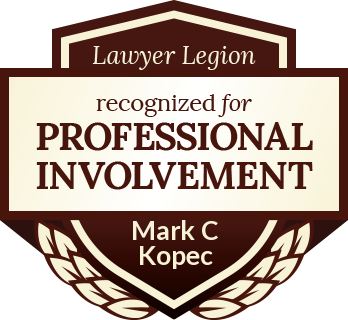Mark Kopec Now
IV
⚕️ Intravenous Therapy and the Shadow of Medical Malpractice
Intravenous (IV) therapy is one of the most common medical procedures performed. It is a seemingly simple act of placing fluids or medication directly into a patient’s vein. However, within this routine IV practice lies the potential for significant harm, giving rise to serious claims of medical malpractice. Understanding the history, application, and risks associated with IV therapy is crucial. They help in proving when a standard procedure crosses the line into medical malpractice.
The History and Definition of IV Therapy
The concept of placing substances directly into the blood has a long and sometimes morbid history. It started before modern medical knowledge. The first known attempt is often traced back to 1492. A doctor caring for Pope Innocent VIII allegedly tried a blood transfusion, with bad results for all involved.
Real scientific exploration began in the 17th century. In 1656, English architect and scientist Sir Christopher Wren performed early successful IV injections into dogs using a pig’s bladder and a quill. This lead some to call him the “father of modern IV therapy.” However, progress remained slow and IV medical malpractice occurred due to early equipment and a lack of understanding of circulation and blood compatibility.
The turning point came in the 19th century. Dr. Thomas Latta started using the intravenous injection of saline solution in 1832 to successfully treat cholera patients. He saw the need to restore lost body fluids. The late 19th and early 20th centuries then saw the invention of the hollow needle, the hypodermic syringe, and the widespread adoption of antiseptic techniques. These made IV therapy safer and more routine. A major leap then occurred in the 1950s. The development of the modern disposable plastic catheter replaced rigid metal needles. It significantly reduced the risk of vein damage and infection. This solidified IV therapy’s place in modern medicine.
Intravenous (IV) therapy is the infusion of liquid substances directly into a vein. This route ensures rapid and complete delivery into the circulatory system. It makes it the fastest way to distribute fluids and medications throughout the body.
Uses and Examples of IV Therapy
The applications of IV therapy are broad, covering routine hospital care, emergency medicine, and specialized long-term treatment.
- Fluid and Electrolyte Replacement: The most common use is to correct dehydration and maintain the body’s fluid and electrolyte balance, particularly in patients who cannot drink (e.g., before or after surgery, or due to severe vomiting/diarrhea). Examples include Normal Saline (0.9% NaCl) and Lactated Ringer’s solution.
- Medication Administration: Many drugs require IV administration for rapid effect, poor oral absorption, or to manage conditions needing precise, continuous dosing. Examples include antibiotics, pain medications, chemotherapy agents, and medications for heart rhythm control.
- Blood Products: IV access is essential for blood transfusions to replace lost blood (e.g., trauma, surgery) or treat conditions like anemia.
- Nutritional Support: Total Parenteral Nutrition (TPN) delivers essential nutrients—proteins, carbohydrates, fats, vitamins, and minerals—to patients whose digestive system is not working (e.g., severe Crohn’s disease or bowel obstruction).
The Kopec Law Firm will review the IV therapy you received in considering a potential medical malpractice case.
Roles of Medical Providers in IV Therapy
A diverse team of doctors and other medical providers is involved in the process of ordering, preparing, and giving IV therapy.
| Provider Role | Typical Responsibilities |
| Ordering Provider | Physicians (MD/DO), Physician Assistants (PA), and Nurse Practitioners (NP). They diagnose the patient’s need, determine the type of IV solution or medication, calculate the correct dosage, and specify the rate and duration of the infusion. |
| Compounding/Dispensing Provider | Pharmacists and pharmacy technicians. They are responsible for preparing and verifying the correct medication and dosage, especially for complex or high-risk infusions like chemotherapy or TPN. |
| Administering Provider | Primarily Registered Nurses (RNs), but also sometimes Licensed Practical Nurses (LPNs), Emergency Medical Technicians (EMTs), and specially trained phlebotomists or IV teams. They insert the IV catheter, connect the tubing, initiate the infusion, and, most critically, monitor the site and patient response. |
In nearly all inpatient and outpatient settings, the responsibility for the hands-on insertion and continuous monitoring of the IV site falls to the nursing staff.

The IV as a Consequence of Malpractice
An IV may be required after a separate act of medical malpractice has occurred. This often happens when a primary act of medical malpractice leads to a life-threatening complication, needing immediate, aggressive intervention.
Examples include:
- Surgical Errors: A surgical mistake resulting in significant, rapid blood loss (hemorrhage). It requires an immediate blood transfusion and rapid administration of IV fluids for volume resuscitation to prevent shock.
- Medication Errors (Non-IV): A prescriber or pharmacist error with an oral medication leading to severe allergic reaction or organ failure. This may require IV administration of life-saving antidotes, steroids, or fluid support to manage the crisis.
- Misdiagnosis or Delayed Diagnosis: A physician’s failure to timely diagnose an infection, such as sepsis. This necessitates the immediate IV administration of powerful broad-spectrum antibiotics. Massive fluid resuscitation combats the systemic infection and multi-organ failure.
In these scenarios, the IV therapy is not the malpractice itself, but rather a necessary treatment for the injury caused by the prior negligence.
IV Administration Resulting in Medical Malpractice
While routine, the administration and maintenance of IVs is a high-risk area for claims of medical malpractice, typically falling into the category of negligent nursing care or institutional failures in training and supervision. A complication only becomes malpractice when a healthcare provider breaches the accepted standard of care, and that breach directly causes a patient injury that was otherwise avoidable.
The most common and litigated complication is Infiltration and Extravasation.
Infiltration and Extravasation
- Infiltration occurs when the IV catheter punctures or slips out of the vein, causing the non-vesicant (non-tissue-damaging) IV fluid (like saline) to leak into the surrounding subcutaneous tissue.
- Extravasation is the severe form, when a vesicant (a medication that can cause blistering, tissue necrosis, and severe injury) like certain chemotherapy drugs, vasoconstrictors, or highly concentrated antibiotics, leaks into the tissue.
Medical Malpractice in IV Infiltration/Extravasation typically involves one or more of the following breaches of the standard of care:
- Improper Insertion or Securing: Failing to select an appropriate site (e.g., near a joint), improperly inserting the catheter, or failing to secure the line adequately, leading to catheter dislodgement.
- Failure to Monitor: The most common ground for a claim. Medical staff, particularly nurses, have a duty to frequently monitor the IV site for signs of infiltration (swelling, pain, coolness, blanching). Ignoring a patient’s complaints of pain, burning, or tightness, or allowing a high-risk infusion to run for an extended period without checking the site, constitutes a breach.
- Delayed Response: Once infiltration is detected, failing to immediately stop the infusion, remove the IV, and initiate corrective protocols (e.g., administering an antidote or warm/cold compress).
- Improper Medication/Rate: Administering an incorrect medication, a contaminated solution, or setting the infusion pump at an excessively high rate. These can contribute to the severity of the infiltration or cause other bad outcomes like fluid overload.
Severe Complications
When medical malpractice results in long or severe extravasation, the patient can suffer bad injuries, including:
- Tissue Necrosis (Tissue Death) and severe chemical burns, often requiring skin grafts or reconstructive surgery.
- Permanent Nerve Damage, leading to chronic pain, numbness, tingling, or loss of function in the affected limb.
- Compartment Syndrome, a painful and dangerous condition. Excessive swelling restricts blood flow to muscles and nerves. It potentially needing emergency surgery (fasciotomy) to prevent amputation.
Conclusion on IV & Medical Malpractice
Intravenous therapy, while a medical necessity, carries risks that demand vigilance and following of the medical standard of care. When the medical malpractice of a medical provider—whether through improper insertion, inadequate monitoring, or a delayed response to bad outcomes like infiltration—directly causes an avoidable injury, the result is a legitimate claim of medical malpractice. A failure to meet the expected level of professional care is the first step leading to accountability and compensation for preventable injuries.
If you have any concerns or questions about medical malpractice, then visit our free consultation page or video. Then contact the Kopec Law Firm at 800-604-0704 to speak directly with Attorney Mark Kopec. He is a top-rated Baltimore medical malpractice lawyer. The Kopec Law Firm is in Baltimore and pursues cases throughout Maryland and Washington, D.C.





